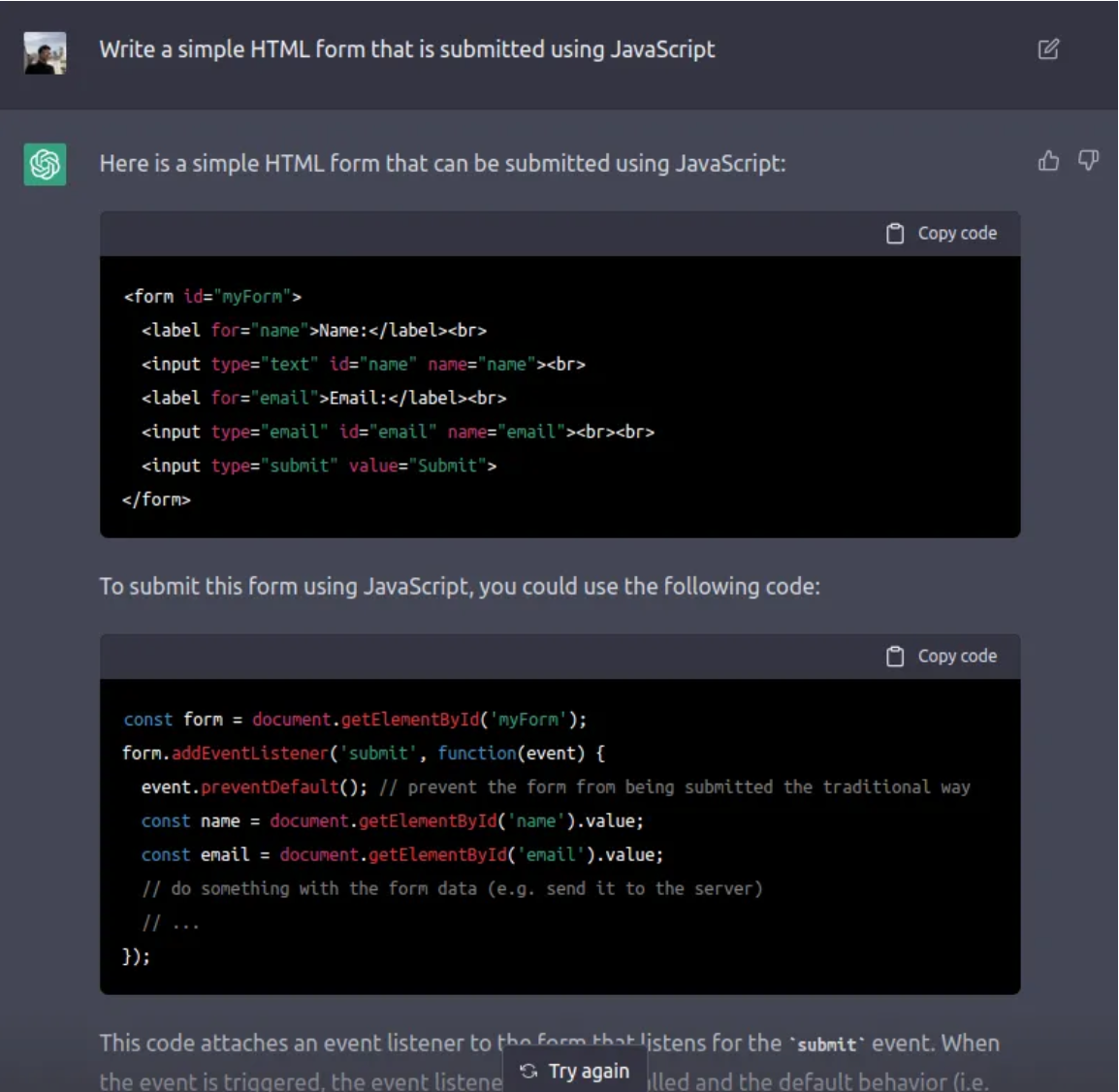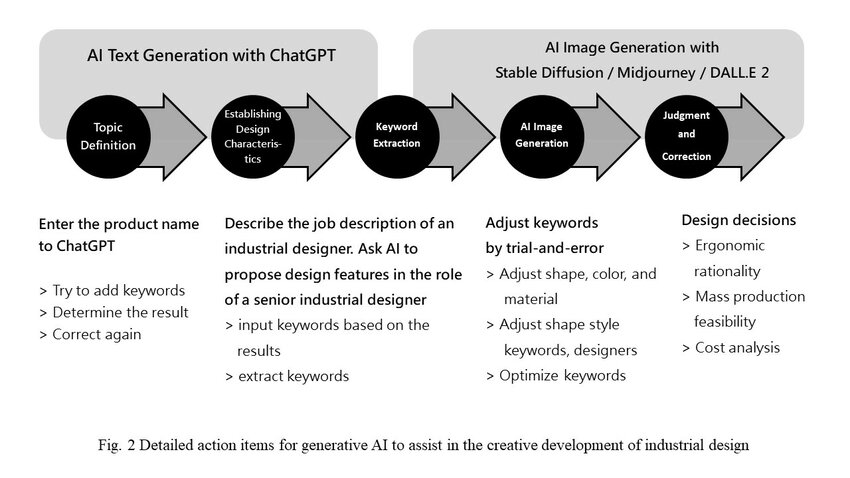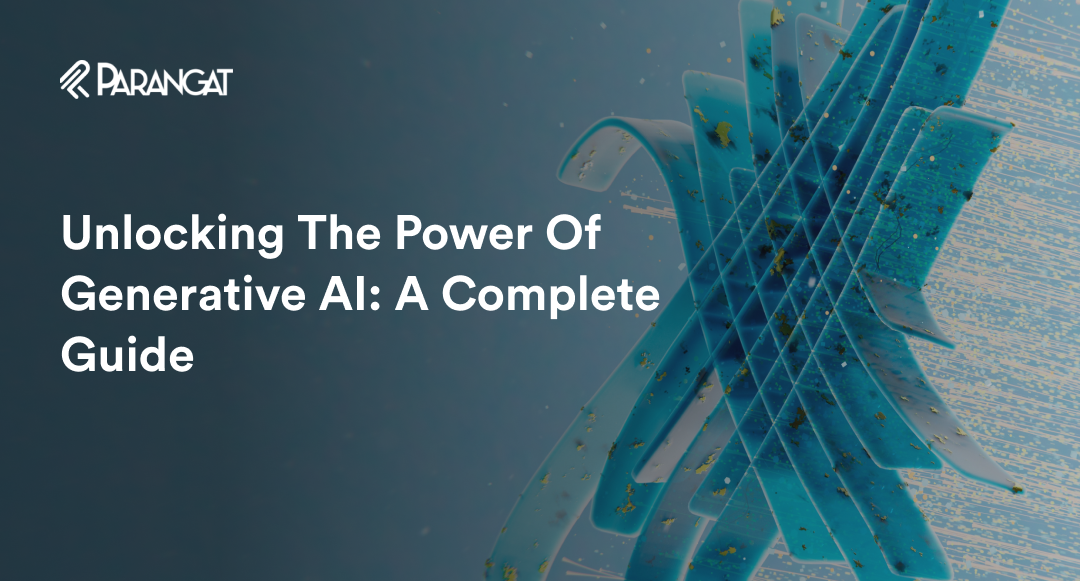Artificial Intelligence is a type of advanced technology that most of us know. AI greatly influences all the significant sectors, including finance, eCommerce, grocery, etc. Generative AI is a part of Artificial Intelligence with tremendous power and can help businesses create new ideas, content, and solutions faster than ever. No wonder, In 2023, Generative AI will change the business world entirely with its potential.
Let’s have a look at our blog to learn about Generative AI in a better way.
What is Generative AI?
Generative AI is an advanced form of Machine Learning that creates various content, including digital videos, images, audio, texts, and codes. It uses deep neural networks to identify patterns and generates new information based on those patterns. A compound annual growth rate of 38.1% is expected for AI usage in businesses worldwide between 2022 and 2030.
Generative AI’s fundamental objective is to make it possible for computers to generate realistic new data that is similar to the data that a human can create. So, algorithms are trained on big datasets to find patterns and gain knowledge.
You will see mainly two generative AI types: Supervised and Unsupervised learning. Supervised learning requires labeled data sets with precise instructions for the model’s output. In contrast, Unsupervised learning entails training a model without labels or instructions. Both methods have their pros and cons depending on the task.
Learn More:- What is Artificial Intelligence?
Number and Data Explain More Than The Words
Here, we are presenting the top stats related to Generative AI. Let’s have a look:
- 82% of employees are concerned that hackers may use generative AI to produce scam emails.
- Americans aware of AI-generated news stories like those from ChatGPT perceive them as either a huge advance (16%), a little advance (28%), or not at all.
- Generative AI approaches will be used to develop over 30% of newly found pharmaceuticals and materials by 2025, up from zero now. The goal of early AI models like ChatGPT integration services is to improve creative work.
- Compared to less than 2% in 2022, AI creation will account for 30% of outbound marketing messages from large organizations by 2025.
- According to 47% of US adults, AI should replace unnecessary duties at work to boost productivity and efficiency.
- 43% of US adult workers think that content produced by AI can be just as excellent as content created by humans.
- A significant blockbuster movie will be released in 2030, with 90% of the film produced by artificial intelligence (AI), up from 0% in 2022.
These stats and figures about generative AI indicate in the coming years; AI will completely dominate the various sectors. You should include generative AI in your industry to get the maximum benefits.
A brief history of Generative AI
The development of generative AI may be traced back to the 1950s and 1960s when academics first started investigating the potential of artificial intelligence (AI). At the time, rule-based systems that could mimic human reasoning and decision-making were the primary goal of AI research. The use of generative models in speech recognition, image processing, and natural language processing (NLP) has been studied by scholars for many years.
As the new century drew near, new generative models, such as Bayesian networks and Markov models, were applied in robotics and computer vision. After deep learning came and further developed, there was significant growth. By 2014, generative AI applications could create beautiful and unique images, videos, and audio of real people with the help of Generative Adversarial Networks (GANs).
The history of Generative AI is a fascinating journey that has evolved over the decades, leading to the emergence of revolutionary artificial intelligence solutions and the concept of AI as a service.
Generative AI Types
Generative AI comes in a variety of forms, including:
- Generative Adversarial Networks (GANs): A neural network with two components, a generator, and a discriminator, is known as a “generative adversarial network” (GAN). While the discriminator assesses the data’s quality, the generator generates new data. The two components collaborate to produce high-quality data comparable to what a human might generate through a feedback loop.
- Recurrent Neural Networks (RNNs): RNNs are a particular kind of neural network that comes into existence for processing sequential data, such as text or speech.
- Variational Autoencoders (VAEs): Data reduction and reconstruction works using neural networks known as variational autoencoders (VAEs). By selecting samples from the already known distribution to provide new data, VAEs can also be employed for productive tasks.
Generative AI Uses
There are numerous uses for Generative AI Development in a variety of industries, including:
- Art and Design: With the help of generative AI, new works of art and designs, including furniture, sculptures, and paintings, can generate.
- Entertainment: Generative AI can produce new music, films, and video games.
- E-commerce: Product descriptions and suggestions for online purchasing can generate using generative AI.
- Medicine: Based on patient data, generative AI can apply to develop new medications and treatment regimens.
Intelligent models that Generative AI uses
Generative AI models work on numerous frameworks and tools. Here, we will explain some of them:
-
Deep Learning frameworks
Popular deep learning frameworks, including TensorFlow, PyTorch, and Caffe, are used to create generative AI models.
They offer pre-built modules and libraries to help create generative models for processes, including image and video processing, natural language processing, and audio processing.
-
Markov Chain Monte Carlo (MCMC)
Markov Chain Monte Carlo (MCMC), MCMC is a generative model that creates samples from a probability distribution using statistical techniques.
-
Reinforcement Learning
Reinforcement Learning algorithms are frequently used in generative AI. They mainly use generative models for games and simulations as they enable the models to learn from the results of their generated actions and develop over time.
-
Language Models
GPT, BERT, and Roberta are top languages that help in various tasks, including text creation, language translation, and question-answering.
Here, you can see some of the few tools and frameworks that help create generative artificial intelligence models.
With new technologies and frameworks, the performance and capabilities of generative AI will continually grow and expand more and more.
Major Applications of Generative AI
In 2023, it will have a wide range of applications for generative AI that are advantageous to many different sectors, including security, healthcare, marketing, advertising, education, gaming, communication, podcasting, and many more.
Let’s know the significant applications of generative AI
-
Semantic Image-to-Photo Translation
Making a realistic image from a drawing or image with semantic content is possible. The application greatly benefits the healthcare sector as it helps with diagnostics.

-
3D Shape Generation
This field is actively undergoing research to create accurate 3D representations of objects. GAN-based shape creation produces better forms regarding how closely they resemble the source. Additionally, exact forms can make and modify to take on the desired shape.
-
Speech-to-Speech Conversion
Generative AI can create voices for audio applications using existing voice sources. With STS conversion, you can quickly develop voiceovers, which is helpful for industries like gaming and film. These programs make it possible to produce voiceovers without paying a voice actor for a video game, commercial, or documentary.
-
Code Generation
Another application for generative AI is in the creation of software since it can produce code without the need for manual coding. This characteristic makes writing code simple for both professionals and non-technical people.

-
Music Production
Generative AI is also helpful in the development of music. You can create original music using tools for music production for advertisements or other creative endeavors. However, including protected artwork in training data poses a severe copyright infringement risk that you must avoid.
-
Image-to-Image Conversion
It requires changing an image’s external elements while keeping its internal elements, including color, medium, or shape, intact. This conversion can involve transforming a daytime image into a nighttime photo. This type of conversion can also alter a picture’s fundamental features, such as its color or style.
-
Text Generation
To address the drawbacks of the most recent ML techniques, researchers sought GANs for answers. Although GANs were first designed for visual tasks, they are also helpful in producing text. Generative artificial intelligence does various tasks, including making dialogues, headlines, or commercials in the marketing, gaming, and communication industries. You can use these tools to create product descriptions, articles, social media posts, or live chat conversations with customers.

-
Image Resolution Increase
Generative AI uses various methods to create new content from current content. A Generative Adversarial Network (GAN) is one of these methods. A GAN generates new data and ensures it is realistic using a generator and a discriminator. You can use Super-Resolution GANs in a GAN-based method to create a high-resolution version of a photograph. Using this method, you can reproduce medical materials that are too expensive to store in high-resolution format in high quality. Another instance would be the use of surveillance.
-
Image Generation
By employing generative AI to translate words into images, users can create realistic photos depending on a setting, subject, style, or location that they define. As a result, it will be simple and quick to develop the necessary graphic content. Given that it may be used commercially, AI-generated image production is essential in media, design, advertising, marketing, and other fields. An image generator, for example, can be used by a graphic designer to create whatever kind of image they desire.
What is the difference between AI and Generative AI?
By roughly 2029, artificial intelligence will be at human levels. Ray Kurzweil, the futurist, and inventor, said that if we extrapolate that further to 2045, we will have doubled our civilization’s human biological machine intellect by a billion.
Let’s know the basic difference between AI and Generative AI with the table below:
| Features | AI | Generative AI |
| Definition | AI means a vast topic that includes several technologies and methods designed to provide machines the ability to carry out tasks that would typically need human intellect. | Generative AI means a branch of AI that focuses on generating fresh data or material with machine learning methods. |
| Purpose | The main aim of AI is to complete those tasks that require the help of human intelligence. | The main aim of Generative AI is to create unique content or data. |
| Techniques | AI can include various innovative and advanced techniques such as recognizing speech or text, converting languages and making decisions. | Generative AI uses generative models. Some of the top generative models include GANS, VAEs to create new output similar to old ones. |
| Output | Predictive output based on past data and patterns. | Creative outputs not seen before similar to examples. |
| Applications | You can find various apps of AI. The top apps include computer vision, natural language processing and many more. | Generative AI also has various apps from the top fields such as music generation, computer graphics and data augmentations. |
| Limitations | AI faces lots of complexities in understanding the context and managing ambiguity. | Generative AI can’t produce output of high quality. |
| Nature of
Learning |
AI can be supervised, unsupervised or semi-supervised. That means you can learn the language from labelled, unlabelled or partially labelled data. | Generative AI is mainly trained using unsupervised or semi supervised methods, where the model learns to generate data from examples without explicit labels. |
Embrace the potential of Generative AI for limitless possibilities
Generative AI is a transformative technology that harnesses the power of deep neural networks to generate new and innovative content. With its ability to create realistic images, videos, music, and text, Generative AI has the potential to revolutionize industries such as art, entertainment, e-commerce, and more.
By leveraging generative models like GANs, RNNs, and VAEs, businesses can unlock new possibilities for creativity, automation, and personalized experiences.
As Generative AI advances, businesses must stay informed and adapt to its potential impact. However, ethical considerations and data privacy must be carefully addressed. By embracing Generative AI responsibly and understanding its limitations, businesses can leverage this technology to drive innovation, enhance productivity, and deliver exceptional value to their customers. The future holds immense opportunities for Generative AI, and businesses that embrace its potential will be well-positioned to thrive in a rapidly evolving digital landscape.

With roll up sleeves, dive in and get the job done approach, it was in the year 2010 when Sahil started Parangat Technologies. Emphasizing a healthy work culture and technology-driven company, he has successfully created a workplace where people love to work and live. He is a software engineer and a passionate blockchain enthusiast.


 +44-7511-112566
+44-7511-112566 +353-1-8079571
+353-1-8079571 +1-415-799-9792
+1-415-799-9792

